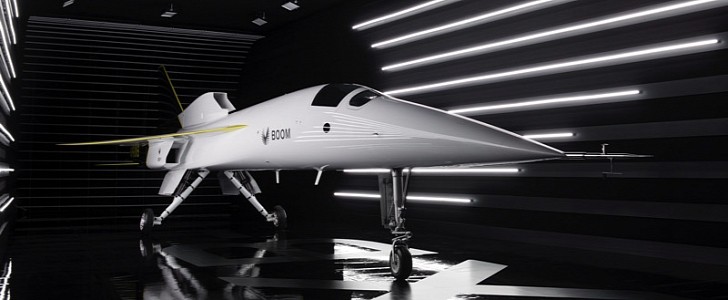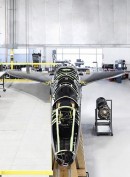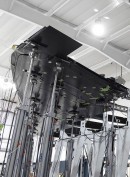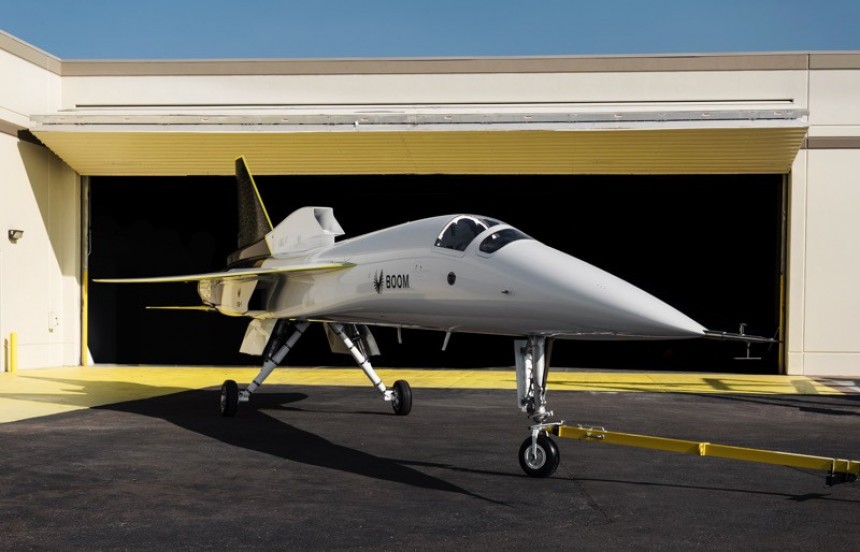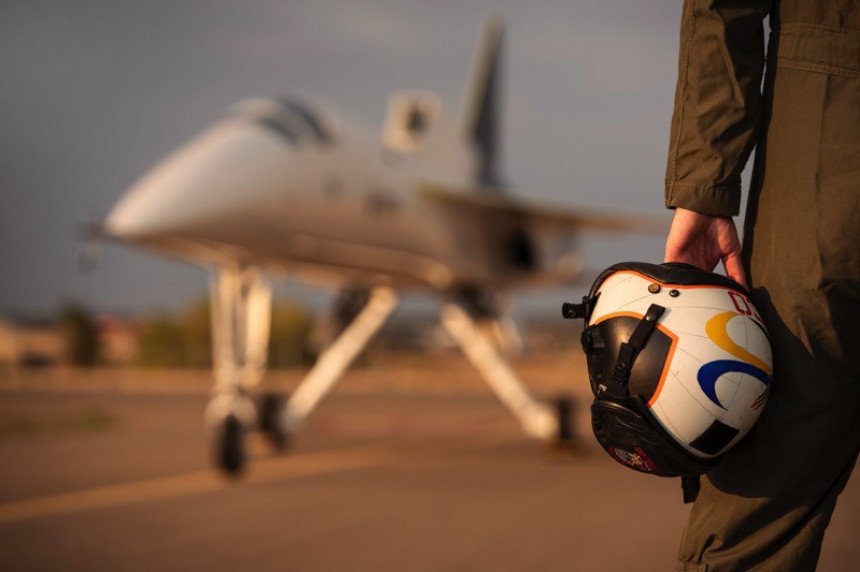Designed by Boom Supersonic, the XB-1 represents a demonstration of state-of-art technology for future high-speed flight. Being scheduled to be flight tested in 2021, it represents the first civil supersonic aircraft ever built without any government funding.
Despite its rivals in the supersonic race, like the Aerion AS2, for example, which at the moment are still only projects living on a computer hard drive or under early development, the XB-1 is an actual fully functional aircraft. Meant to represent a proof of concept, it is a 1:3 the scale of Boom's future supersonic passenger airliner named Overture. The XB-1 had been through its rollout event back in October 2020, showcasing its technical attributes to the world. At the moment, it is thoroughly tested in order to gain valuable knowledge.
For starters, this prototype it is not designed to carry any passengers. That job is left for the later Overture airliner. The only humans it will be taking up are the two test pilots, with not much room to spare.
To accomplish its purpose, the XB-1 employs a series of materials such as carbon composites, titanium, and aluminum, in the effort of achieving the perfect balance between high strength, low weight, and high-speed stability. Furthermore, the choice of materials must withstand surface temperatures up to 260°F (127°C) during supersonic travel. With that in mind, Boom has designed the XB-1's fuselage to cope with temperatures exceeding the 300°F (149°C) threshold.
The exterior design of this beautiful machine is breathtaking. There is a "fineness ratio" in the aircraft world, meaning the ratio between the plane's length and width, something the XB-1 excels at because of its streamlined aesthetics. The lines have been possible thanks to the newest advancements in laser tooling technology that Boom Supersonic has deployed during the production process, which enabled tolerances of only thousands of an inch, making the assembly of the aircraft a truly exact science.
The wing design resembles an ogival delta form which has been the prime choice for reliable in-flight control and increased stability over a wide interval of cruising speeds. Efficiency is critical, no matter the traveling pace, subsonic or supersonic, so considerable thought has been put into the wing development process.
The essential piece of equipment in making the wings has been the portable ultrasound probe that allows the R&D team to study the whole structure and cautiously search for any defects below the surface level. In addition to that, the wings have been put through numerous static load tests that approved the ogival delta wing configuration as fit for flight even at the maximum load case of 60,000 pounds (27,216 kg).
The massive power required for supersonic cruising comes from three J85 General Electric jet engines that produce a maximum thrust of 12,300 lbf (5,580 kgf). The engine assembly underwent extensive testing at the United States Air Force Academy to ensure their safe operation and prove their capabilities. Furthermore, the engines have been put through alternative fuels testing, which confirmed that maximum afterburning effects could be achieved when running on environmentally friendly fuel.
The landing gear can endure extreme touchdown conditions and has been examined during several drop tests and has successfully validated its performance. Moreover, the anti-skid braking system allows for a safe and complete stop during approach speeds of 185 knots, equivalent to 213 mph (343 kph).
Composed of 3,488 unique parts and 15,129 individual screws, the XB-1 represents a successful initiation into what Boom Supersonic will be able to produce in the future, and a superb insight into what air travel at speeds exceeding Mach 2 will be like. The ever developing world, instant communication abilities and fast pace modern existence call for fast and safe international flight, and the Boom XB-1 can most certainly open to doors to what our future society needs.
For starters, this prototype it is not designed to carry any passengers. That job is left for the later Overture airliner. The only humans it will be taking up are the two test pilots, with not much room to spare.
To accomplish its purpose, the XB-1 employs a series of materials such as carbon composites, titanium, and aluminum, in the effort of achieving the perfect balance between high strength, low weight, and high-speed stability. Furthermore, the choice of materials must withstand surface temperatures up to 260°F (127°C) during supersonic travel. With that in mind, Boom has designed the XB-1's fuselage to cope with temperatures exceeding the 300°F (149°C) threshold.
The wing design resembles an ogival delta form which has been the prime choice for reliable in-flight control and increased stability over a wide interval of cruising speeds. Efficiency is critical, no matter the traveling pace, subsonic or supersonic, so considerable thought has been put into the wing development process.
The essential piece of equipment in making the wings has been the portable ultrasound probe that allows the R&D team to study the whole structure and cautiously search for any defects below the surface level. In addition to that, the wings have been put through numerous static load tests that approved the ogival delta wing configuration as fit for flight even at the maximum load case of 60,000 pounds (27,216 kg).
The massive power required for supersonic cruising comes from three J85 General Electric jet engines that produce a maximum thrust of 12,300 lbf (5,580 kgf). The engine assembly underwent extensive testing at the United States Air Force Academy to ensure their safe operation and prove their capabilities. Furthermore, the engines have been put through alternative fuels testing, which confirmed that maximum afterburning effects could be achieved when running on environmentally friendly fuel.
Composed of 3,488 unique parts and 15,129 individual screws, the XB-1 represents a successful initiation into what Boom Supersonic will be able to produce in the future, and a superb insight into what air travel at speeds exceeding Mach 2 will be like. The ever developing world, instant communication abilities and fast pace modern existence call for fast and safe international flight, and the Boom XB-1 can most certainly open to doors to what our future society needs.
